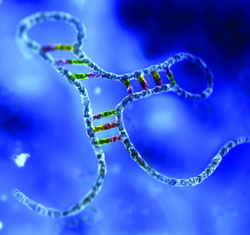Current Research

Goal 1 - Characterize novel prokaryotic and eukaryotic small RNAs.
Goal 2 - Define roles for bacterial sRNAs in stress response.
Goal 3 - Characterize regulatory roles for RNA modifications.
Goal 4 - Explore roles for G4 DNA in mediating enhancer promoter interaction.